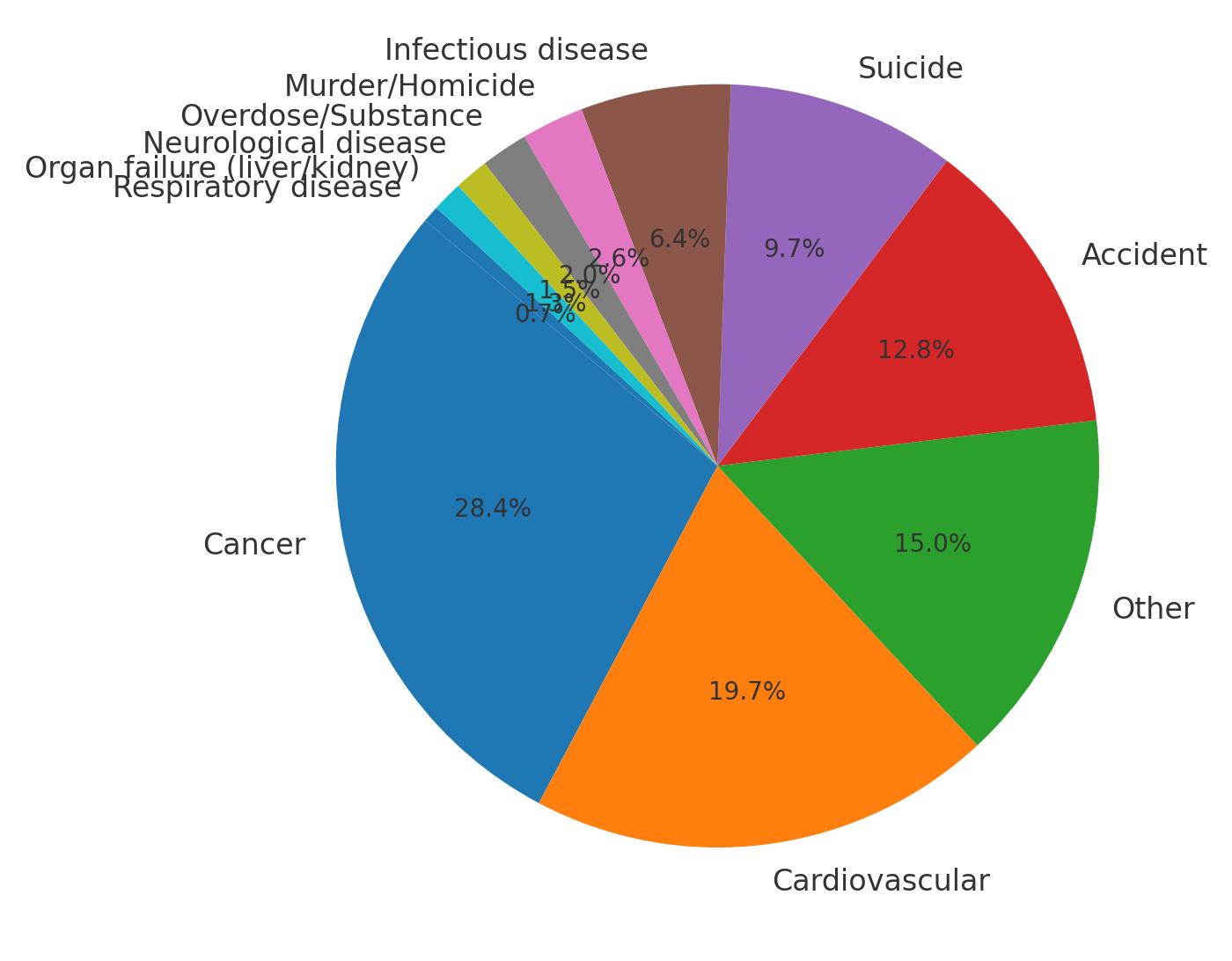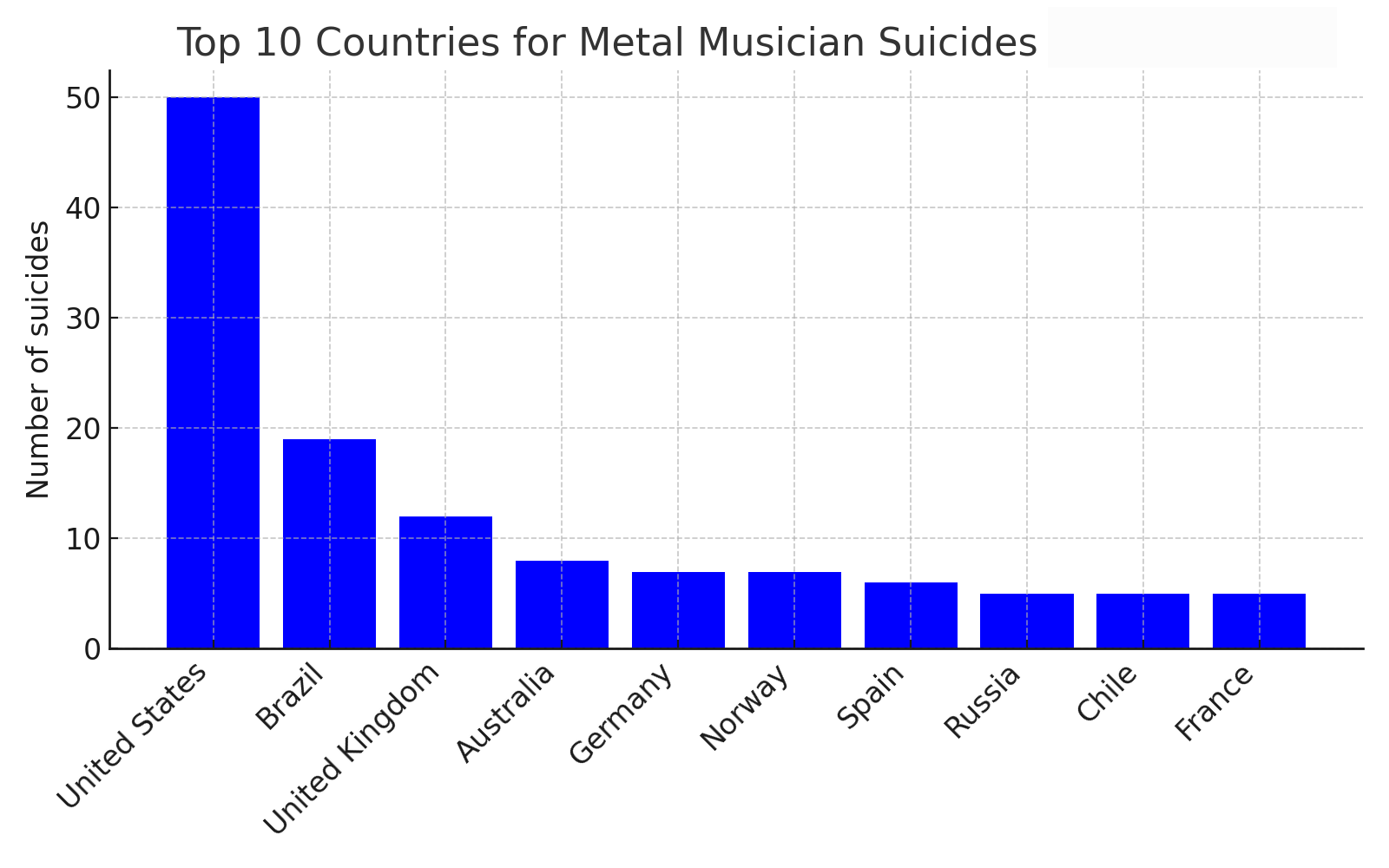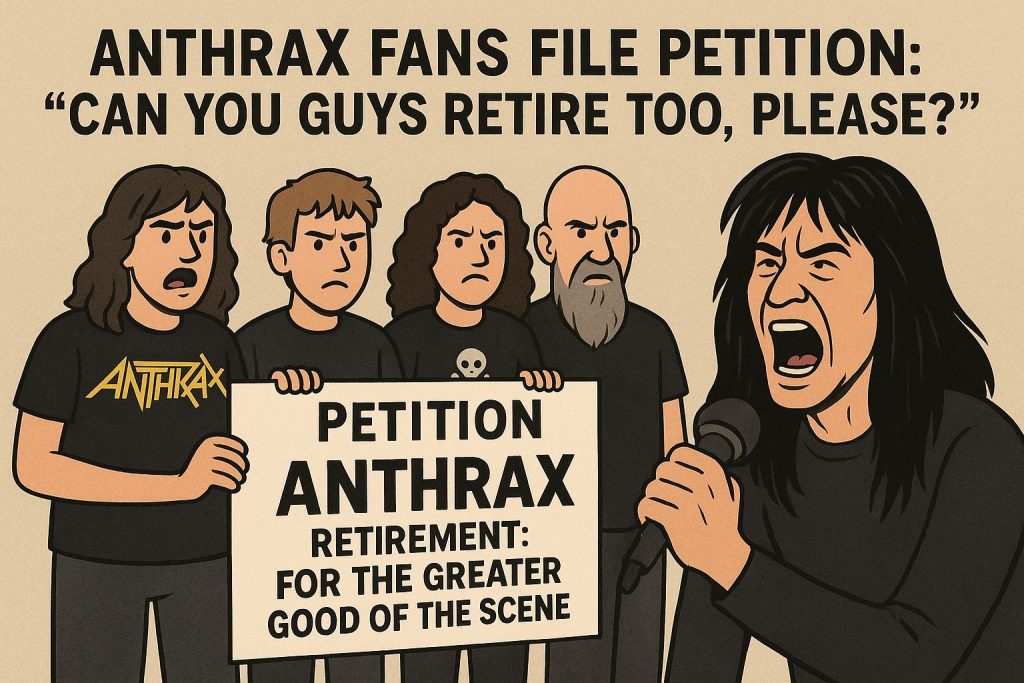Metal often sings about death, but what does reality look like when we examine how its musicians actually pass away? Using the R.I.P. archive from Metal Archives, we analyzed the last ten years of entries (2015–2025). Out of nearly 4,700 records, 1,855 had a clearly listed cause of death. Here’s what we found.
The leading causes of death
When grouped into broader medical/incident categories, the top results look like this:
Cancer – ≈27% of known cases (the single largest cause).
Cardiovascular issues (heart attack, cardiac arrest, stroke, aneurysm) – ≈24%.
Suicide – 180 musicians, ≈10%.
Accidents (car, motorcycle, plane, falls, drowning, etc.) – ≈9%.
Overdose/Substance-related – ≈6%.
Murder/Homicide – 41 musicians, ≈2%.
Other causes (infectious diseases, respiratory illness, neurological disorders, liver/kidney failure, etc.) make up the rest.

Suicide and murder statistics
These are the hardest numbers to read, but important to note.
Suicides: 180 cases. That’s about 1 in 10 known deaths.
The United States leads the count.

Murders/Homicides: 41 cases, just over 2% of known deaths.
Most frequent in Brazil and Mexico, followed by the United States.
What these numbers tell us
The stereotype of the “doomed rocker” dying young from drugs is far less common than in the past. Cancer and heart disease take far more lives today.
Still, mental health struggles are a major factor: suicides account for about 10% of all known musician deaths.
Violence—murders and homicides—is heavily region-dependent, with higher numbers in Latin America.
Behind every statistic is a real person, often someone who dedicated their life to creating the music we love. These numbers may be grim, but they highlight not only mortality in metal, but also the importance of health, support systems, and safety.
🔍 Sources:
Analysis based on Metal Archives “R.I.P.” entries. Only known causes of death were counted.

